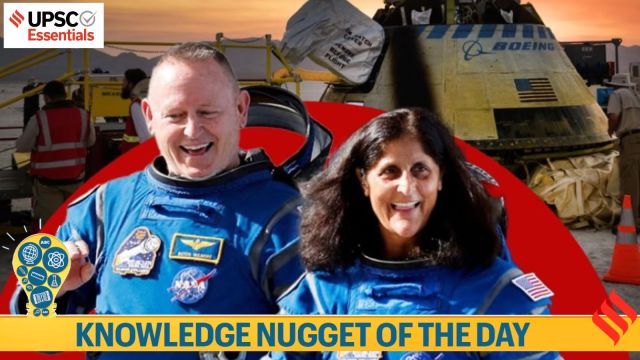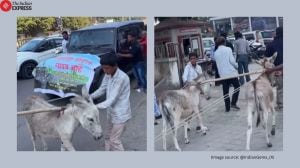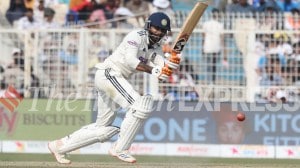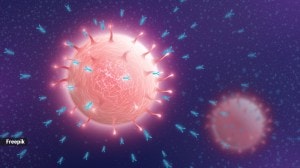As NASA astronaut Sunita Williams returns to Earth, it marks the end of a prolonged stay for both Williams and Butch Wilmore. Originally planned as a brief, days-long mission, their stay extended to nine months due to propulsion issues with the Boeing Starliner spacecraft. According to NASA, the duo successfully undocked from the ISS at 10:35 am IST, commencing their 17-hour voyage home aboard SpaceX’s Dragon spacecraft. Here are five key points related to this incident that are crucial for the UPSC Exam.
The Starliner spacecraft carried NASA astronauts Sunita Williams and Butch Wilmore to the International Space Station (ISS) in June 2024. Its return journey to Earth was initially scheduled for June 26 but was postponed due to issues detected in some key mechanisms required for a safe flight.
• It is Boeing-built spacecraft. The Boeing website describes the CST-100 Starliner as a “space capsule that will take people to and from low-Earth orbit.” LEO refers to Earth-centered orbits with an altitude of 2,000 km or less. Starliner’s spacecraft was developed in collaboration with NASA’s Commercial Crew Program.
• It can accommodate up to seven passengers or a mix of crew and cargo for LEO missions. It is also reusable up to 10 times with a six-month turnaround time.
• SpaceX developed Crew Dragon as part of NASA’s plan to hand over space station flights to American companies after the space agency retired its space shuttle in 2011. Crew Dragon’s first mission to the ISS took place in 2020 when it transported four American and Japanese astronauts to the destination.
Story continues below this ad
• Crew Dragon consists of two parts: a reusable space capsule and an expandable trunk module. The spacecraft is launched into space atop a Falcon 9 — a reusable, two-stage rocket developed by SpaceX — and docks automatically to the ISS.
3. Space anaemia: When Sunita Williams’ return was postponed, concerns about the health effects of space travel gained attention. One condition that emerged as a significant concern was space anemia.
• Space anaemia is a condition observed in astronauts during and after extended space missions. Unlike anaemia on Earth, which is often caused by nutritional deficiencies or chronic diseases, space anaemia is primarily due to the body’s adaptation to the unique environment of space, said Dr Narendra Singhla, Lead Consultant – Internal Medicine at the CK Birla Hospital, Delhi.

• In microgravity, the body experiences significant fluid shifts. On Earth, gravity helps maintain the distribution of blood and fluids throughout the body. However, in space, this gravitational pull is absent, leading to an upward shift of bodily fluids towards the head. This shift impacts blood volume and the production of red blood cells.
Story continues below this ad
• Space anaemia arises as a consequence of these fluid shifts. In a microgravity environment, the body’s physiological mechanisms adjust to the new fluid distribution, leading to a reduction in the overall blood volume. Consequently, this reduction can result in lower red blood cell counts and decreased haemoglobin levels. The primary cause of space anaemia is thus tied to how the body responds to and compensates for the lack of gravity.
4. Impact of Space Travel on Astronauts — from ‘Baby Feet’ to Bone Density Loss: Astronauts in space experience significant physiological changes due to prolonged exposure to microgravity, radiation, and isolation. According to former NASA astronaut Leroy Chiao, Sunita Williams and Butch Wilmore might experience trouble in walking as and when they return to Earth, as he claimed that due to prolonged exposure to space walking, astronauts develop “baby feet”, reports stated.
• Chiao said that due to the absence of air and gravity, astronauts experience weightlessness in space and it leads to calluses on the feet to disappear. “You basically lose the thick part of your skin,” Chiao added.

• Apart from baby feet, due to an absence of gravity, often irreparable bone density loss is reported when exposed to space for a longer period of time. NASA states that for every month spent in space, the weight bearing bones of astronauts become about one percent less dense, if proper precautions are not taken.
Story continues below this ad
5. Cosmic radiation and DNA damage: Space is filled with cosmic rays, high-energy particles from outside our solar system, and solar radiation, which can penetrate the body and damage cellular DNA. Unlike on Earth, where the atmosphere and magnetic field provide a protective shield, astronauts in space are far more exposed to these harmful particles. Prolonged exposure to these rays can lead to mutations, increasing the risk of cancer and other genetic disorders.
• Microgravity, or the near-weightlessness experienced in space, also plays a role in compromising the body’s ability to repair damaged DNA. In microgravity, cellular functions, including the DNA repair processes, are altered. This means that any DNA damage sustained in space is less likely to be effectively repaired, leaving cells more vulnerable to the long-term effects of radiation exposure.
BEYOND THE NUGGET: Gaganyaan
1. In light of the return of NASA astronauts Sunita Williams and Barry ‘Butch’ Wilmore from the International Space Station (ISS), understanding India’s Gaganyaan mission becomes particularly significant. Announced in 2018, Gaganyaan is one of India’s most ambitious space programmes.
2. Gaganyaan project aims to demonstrate human spaceflight capability by sending a crew of 3 members to a 400 km orbit for a 3-day mission and safely returning them to Earth by landing in the Indian sea waters. Just three countries – the United States, Russia and China – have executed human spaceflight missions till now.
Story continues below this ad
3. The task of sending humans into the vast unknown and bringing them back safely is more expensive and challenging than the Mars and Moon missions. A successful execution would put India in the company of the US, Russia and China.
4. As stated on the ISRO website, the short-term goal of Gaganyaan is to demonstrate human spaceflight to Low Earth Orbit, while the long-term goal is to lay the foundation for a “sustained Indian human space exploration programme”. Success in its ultimate objective — proving that India is capable of indigenously developing this complex technology — would be a huge boost for ISRO.
(Sources: SpaceX’s Falcon 9 ,NASA astronauts Sunita Williams, Butch Wilmore may face baby feet, bone density loss upon return from space, All about space anaemia, National Space Day, What is SpaceX’s Crew Dragon, which will bring back Sunita Williams from space?)
🚨Union Budget 2025 special: Click Here to read the February 2025 issue of the UPSC Essentials monthly magazine. Share your views and suggestions in the comment box or at manas.srivastava@indianexpress.com🚨
Story continues below this ad
Subscribe to our UPSC newsletter and stay updated with the news cues from the past week.
Stay updated with the latest UPSC articles by joining our Telegram channel – Indian Express UPSC Hub, and follow us on Instagram and X.



 Sunita Williams smiles and waves after the Crew-9 mission splashdown (Photo – NASA)
Sunita Williams smiles and waves after the Crew-9 mission splashdown (Photo – NASA)

































